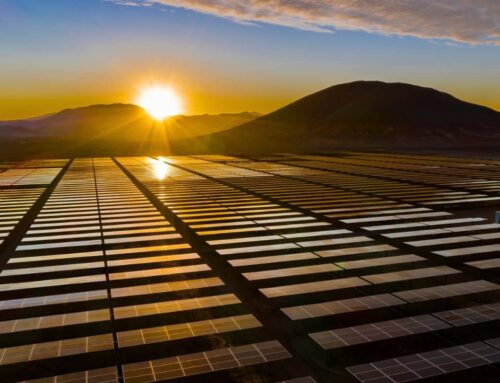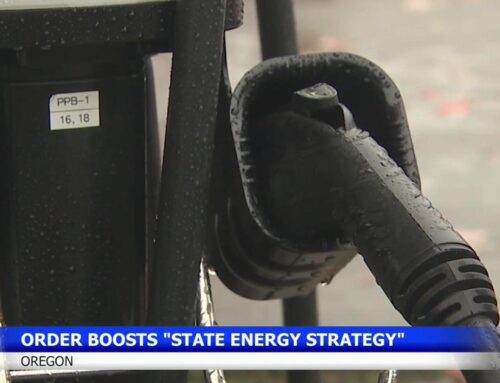What Trump’s tariffs mean for the renewable energy transition
April 4, 2025
This analysis and news roundup comes from the Canary Media Weekly newsletter. Sign up to get it every Friday.
On Wednesday, President Trump unveiled a suite of new tariffs that target pretty much every country and territory in the world — including some where nobody even lives. The full extent of the tariffs’ reach remains unclear, but wind developers, solar manufacturers, tech companies, automakers, and even fossil-fuel producers are already sweating.
The wind industry, already suffering under the Trump administration, is likely to face further setbacks. Wind turbines rely on components from around the world, even if they’re usually assembled in the U.S. The same is true for solar panels and batteries. Endri Lico, an analyst at Wood Mackenzie, told The New York Times that a 25% tariff on imports could raise the cost of building onshore wind turbines by 10% and renewable energy overall by 7% — and many of Trump’s tariffs exceed that 25% threshold.
Higher clean energy costs will pose a big challenge for tech companies looking to expand energy-hungry data centers to power AI, Semafor reports. Renewables are the cheapest, quickest way to add new power to the grid, especially amid yearslong waits for new gas turbines.
The EV industry is also at risk. Most auto factories being built in the U.S. are focused on EVs and batteries, but they still rely on foreign metals and materials. Manufacturers and dealers fear sticker prices on cars could rise as much as $10,000 under the tariffs, Politico reports, exacerbating one of the biggest deterrents to EV adoption: high up-front costs.
The White House exempted imports of oil, gas, and refined products from the tariffs, alleviating fears for refiners that rely on crude oil imports. But oil prices still plunged Thursday morning, as investors worry the tariffs will slow economic growth and lower fuel demand around the world.
The potential slump in overall economic activity could result in one climate upside: a drop in emissions. “In the short-term, any decline is likely to have a positive impact on emissions reduction,” writes finance professor Rakesh Gupta in The Conversation. “We saw this effect during the COVID-19 pandemic, when global production and trade fell.”
But longer-term progress on U.S. clean energy manufacturing and deployment will likely stall if the announced tariffs hold, with implications that go far beyond decarbonization. Here’s how Vanessa Sciarra, vice president of trade and international competitiveness for American Clean Power, put it in a Thursday statement:
“The policy whiplash from these tariffs will ultimately undermine the ability to realize a domestic supply chain and will constrain efforts to deliver energy security and reliability for Americans.”
Illinois pushes for stronger vehicle emissions rules, despite House threats
Illinois advocates are pushing their state to embrace California’s nation-leading vehicle emissions standards, Canary Media’s Kari Lydersen reports — even as President Trump and House Republicans threaten to eliminate the rules.
Sixteen states and D.C. have adopted California’s zero-emission vehicle rules, and 10 have followed its Advanced Clean Trucks regulations. But to be enforceable, those rules needed a waiver from the U.S. EPA. President Trump has called for “terminating” those waivers. On Thursday, House Republicans introduced legislation that would roll the waivers back, even though the nation’s top legislative auditor ruled that they aren’t subject to congressional review.
Crushing the rules would be a setback not only for efforts to decarbonize transportation but to clean up local air quality, too. Illinois advocates said a key reason they’re pushing these rules is to rid places like Joliet and Chicago’s Little Village neighborhood of the air pollution caused by diesel trucking.
Search
RECENT PRESS RELEASES
Related Post




